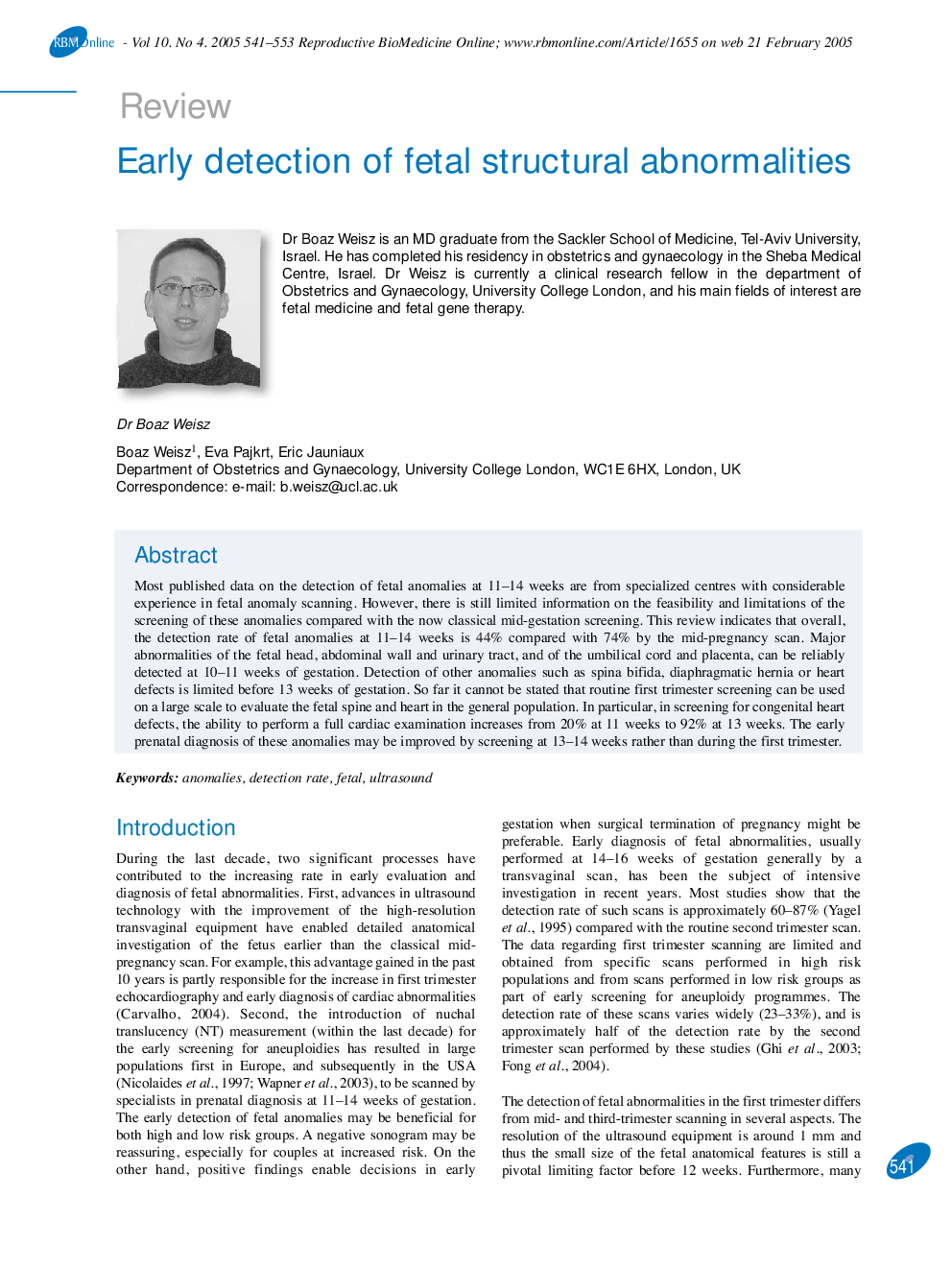| Article ID | Journal | Published Year | Pages | File Type |
|---|---|---|---|---|
| 9334735 | Reproductive BioMedicine Online | 2005 | 13 Pages |
Abstract
Most published data on the detection of fetal anomalies at 11-14 weeks are from specialized centres with considerable experience in fetal anomaly scanning. However, there is still limited information on the feasibility and limitations of the screening of these anomalies compared with the now classical mid-gestation screening. This review indicates that overall, the detection rate of fetal anomalies at 11-14 weeks is 44% compared with 74% by the mid-pregnancy scan. Major abnormalities of the fetal head, abdominal wall and urinary tract, and of the umbilical cord and placenta, can be reliably detected at 10-11 weeks of gestation. Detection of other anomalies such as spina bifida, diaphragmatic hernia or heart defects is limited before 13 weeks of gestation. So far it cannot be stated that routine first trimester screening can be used on a large scale to evaluate the fetal spine and heart in the general population. In particular, in screening for congenital heart defects, the ability to perform a full cardiac examination increases from 20% at 11 weeks to 92% at 13 weeks. The early prenatal diagnosis of these anomalies may be improved by screening at 13-14 weeks rather than during the first trimester.
Related Topics
Health Sciences
Medicine and Dentistry
Obstetrics, Gynecology and Women's Health
Authors
Boaz Weisz, Eva Pajkrt, Eric Jauniaux,
